I agree with Camikaze that movement in a system like this will be more complicated and very likely somewhat annoying. The games I have played using this type of system it always annoys me how much of a pain it can be to block or catch an enemy running around in an open field. The reason why I'm still interested in looking at developing this system for Civ is that I imagine it could improve the multiplayer experience by removing the current implementation of simultaneous turns.
An inherent problem with this system when adopting if for Civ is that it is really developed to be used in games where the playing field consists of much fewer tiles and units as a result do not move many tiles per turn. To reduce annoying behavior during movement, I would take note if this and reduce how many movement points units have in the game, and if possible, reduce the number of tiles in a standard map. Regular infantry would have 1 movement point, cavalry 2 and so on. If the map size is not reduced this change would force the turn limit of the game to be expanded, since moving around the world would take much longer.
To reduce the added complexity additional types of orders should be kept at a minimum.
A general rule I believe will be needed: All units deal damage before damage is absorbed
This will resolve situations like the following: Three units controlled by three different players are all in tiles bordering each other. A attacks B, B attacks C and C attacks A. If one unit deals damage before any other (reducing the damaged unit's potential damage output) the system will not produce consistent results.
Combat Phases
I would first divide the combat resolution into several phases. Here's what I came up with:
1. Bombardment
Artillery, bombarding ships and airplanes on bombing run orders are resolved first. The reason why I put this first is to allow bombardment to deal damage to units in a tile before those units get a chance to move away from the targeted tile.
2. Unit Movement
Units with movement orders are moved to their targeted tile. How to deal with various situations that can occur (units bumping into each other etc.) is discussed further down. Units on intercept orders deal and receive damage in this phase.
3. Combat Resolution
Each contested tile (a tile containing opposing units) is resolved. The system for doing this, I imagine, should not need to affect the other phases. I see designing this system as a separate topic. I would suggest using a round-based system where the units take turn dealing damage, and after a set number of rounds combat is ended.
4. Combat Results
Retreating units are moved or destroyed. Cities taken switch hands. Forced unit movement, like units retreating, might be hard to make predictable. Generally units should retreat to the tile from where they attacked or if defending, in a straight line away from where the attacker came.
But when defending, a unit's natural retreat target might be occupied by an enemy unit. And when attacking, another unit might have moved into the tile from which it came. The unit should obviously not simply run into the enemy lines, so to which tile should it move if all other parameters are equal?
A related issue is that the player might feel a unit should retreat to a particular tile (a hill, a tile easier to reinforce etc.), something that the game logic cannot solve.
Because of these two issues it might be best to not allow units to retreat and instead use a system like it's currently implemented in Civ5, where tiles are only taken when the defender is destroyed.
5. Fortification and Healing
Units on fortify order will finish their fortification and units healing will get their HP. The reason why this is done last is so that a unit cannot move within range of the enemy units and fortify before they can be attack.
Unit Movement
Two important potential problems I believe must be addressed in the movement system are the following:
1. Catching enemy units that is fleeing that I wrote about in my first post. Windsor's zone of control solution sounds like a decent way of solving this. If two units are next to each other, if one player chooses to attack and the other to move away, the attacking unit will deal damage before the moving unit escapes. It maybe shouldn't deal full damage, but that's a minor detail.
To expand on this system, faster units perhaps should be able to escape zone of control. A horse archer would be able to move out of the way from an attacking swordsman. This of course introduces the annoying behavior that the player controlling the slower unit would have to guess where the faster unit will move. If the player guesses right they will end up in the same tile and combat will occur. Since this is all about luck, I believe this is a big issue that needs to de resolved.
2. Two units that are next to each other and attacking each other should not simply switch places and avoid combat. Having the opponent avoid combat like this without moving back would be annoying. I would suggest that both units are thought of as attacking and no one receives a defense bonus from either terrain or abilities.
I'm not sure how to deal with units moving into any of the two tiles the units are attacking from. A unit moved into the friendly tile was not expected to be used in the attack by the player. But at the same time it were most likely meant to be used as a defender of the tile. Having the game rules commit the unit to the attack can in some cases be what the player wants and in others not. I can't think of a solution to this problem.
Moving Units To Their Target
A system that is easy to understand and predict would be to to it in steps. all units with movement points left move one tile. Any opposing units that end up in the same tile are stopped and will not move any more during the movement phase. Repeat this until all units have spent their movement points, reached their target or are tied up in combat.
This system can also be reversed so that the unit/units with the most movement points are all moved one tile first. Then make a new list of the units with the most movement points left and move them. Repeat until all units have finished moving.
Issues might arise when unit movement paths cross. Unit paths can overlap perpendicular or parallel to each other.
1. Units may cross in such a way that they at some point will move into the same tile.
2. Units may move next to each other and then attempt to switch places.
3. Unit movement paths may cross, but the units will not enter any tile at the same time.
4. Units may move next to each other and then one unit moves to an unoccupied tile while the other moves to the tile which the first moved from.
The above system would create rules for this. But I'm not convinced it would always create the best results. Reducing the number of movement points units have would reduce these issues. But they would still occur.
More Issues
Aircraft Intercept
The problem arises when multiple aircraft enter the intercept area of an opposing aircraft. To which aircraft should the interceptor deal damage? How should damage dealing to the interceptor be handled and affect combat with other aircraft?
Possibility of Using Blitz
In my opinion, it should be possible punch holes in the enemy front and attack through the holes at units in the back on the same turn. To allow this, it should be possible to give certain units multiple attack commands. First the unit attacks its first target, and if successful, it continues and attacks its second target. Now I can imagine this not creating a number of new issues that needs to be dealt with. All combat would for example not be resolved in one go since the blitzing units would need to move to their second target.
Resources
An interesting game to look at while designing this system would be Gary Grigsby's World at War: A World Divided. It is a more detailed take on the Axis & Allies concept. Definitely a great game.
http://www.matrixgames.com/products/330/details/Gary.Grigsby's.World.at.War:.A.World.Divided
It uses a standard turn based system mixed with a system where the player can move multiple units before choosing to resolve contested territories. To explain: When playing Germany the player would on the first turn start by move several tanks, a few paratroopers, some infantry and aircraft into the low countries (one territory in the game). The player would then resolve the conflict in the low countries resulting in it falling into German control. Note that this does not end the turn. So before the Allied player have a chance to respond, the German player moves several units into the territory containing Paris, circumventing the Maginot Line, resolves that conflict and capturing Paris. More unit movement and combat would be carried out on that turn before the German player would choose to end the turn.
That system worked great in that game. But since it doesn't help improve the multiplayer experience in the ways I want I have not considered it for Civ. But some of you might find it interesting.



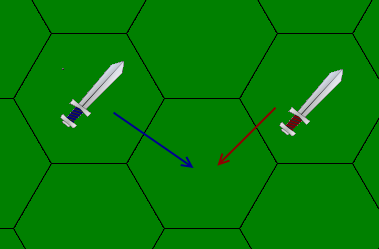



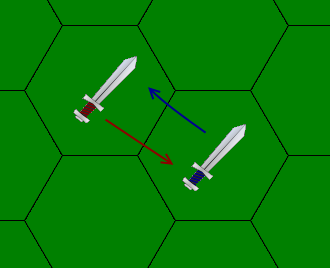
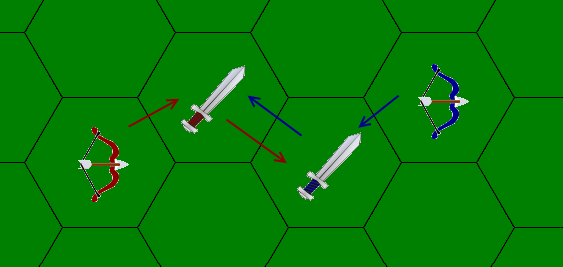

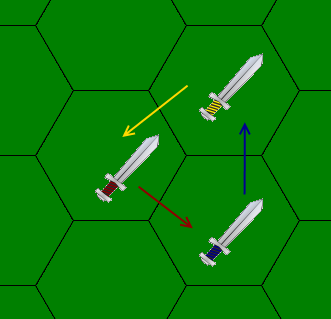
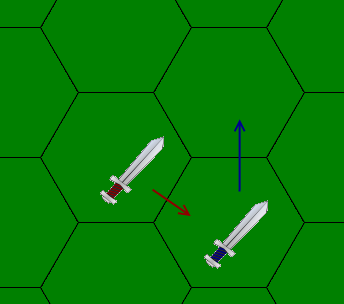

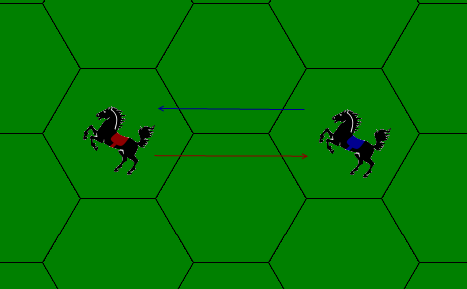

 ZoC and units on crossing paths not swapping but fighting this really limits it. And we have forts for defensive structure which can intercept. Really, if a bunch of knights are pillaging your countryside you have done something wrong
ZoC and units on crossing paths not swapping but fighting this really limits it. And we have forts for defensive structure which can intercept. Really, if a bunch of knights are pillaging your countryside you have done something wrong 